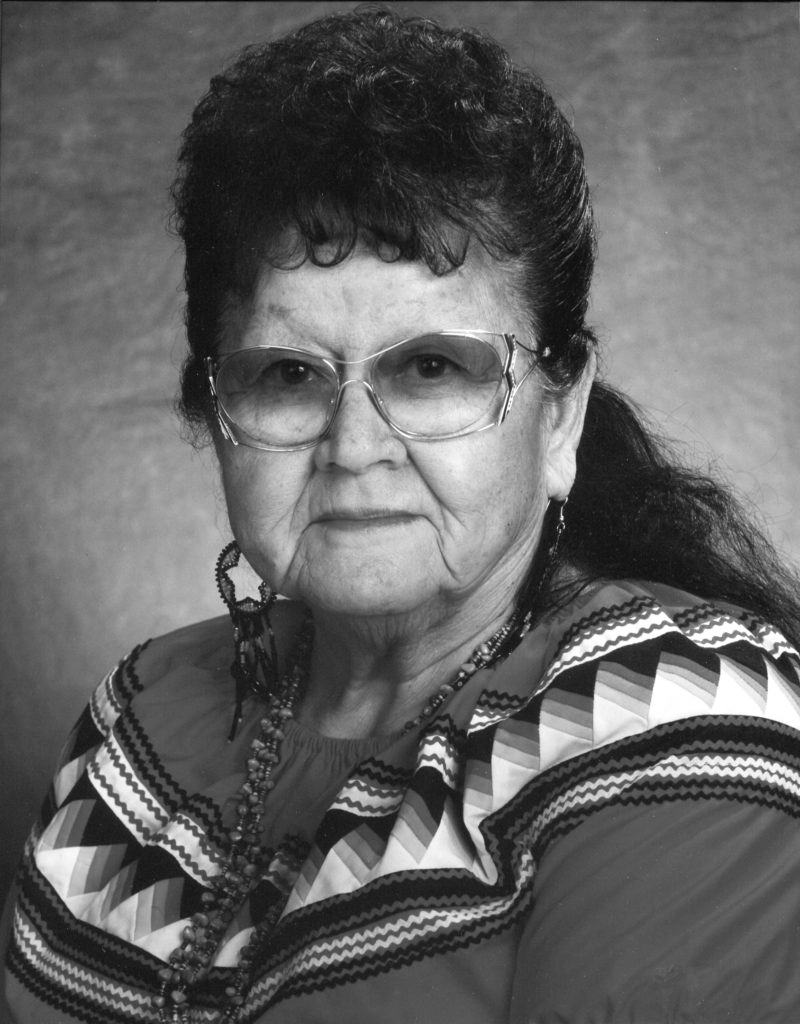Betty Mae Tiger Jumper’s amazing life is an inspiration for today’s young women.
Silver Springs State Park recently added an impressive wheelchair accessible glass-bot-tom boat to its fleet. This innovative craft is a first in Florida and allows anyone who uses a wheelchair to view the beautiful springs as countless visitors have done for decades. The boat is fittingly named the Chief Potackee – Betty Mae Tiger Jumper, aft er a trailblazer of a Seminole woman.

Many Southeastern Native American cultures were, and still are, matrilineal. Societies that are organized around the female line are considered matriarchal. The Seminole and Miccosukee people of Florida are classic examples of the latter. Much of the cultural fabric of these tribes is organized around women. This means most property and clan affiliations for children (think extended families) pass through the woman’s side of the family.
When a couple marries, the man moves in with the woman’s family. Family compounds or “camps” are typically built around the grandmother, with her daughters and their families living there as well. Men and women share important decisions both in the family and community.
Betty Mae Tiger Jumper was born in 1923 into this culture and grew up in a Seminole camp near Lake Okeechobee. With few educational options in the Everglades, she attended the Cherokee Indian School in North Carolina and became the first Seminole person to graduate high school in 1945. She went on to complete nursing school and became the first tribal health director.
In 1957, she helped craft the Seminole Tribal Constitution, formally creating the Seminole Tribe of Florida, and was one of the original signers of the document.
In 1967, she was elected as the first chairwoman of the tribe and became the highest ranking official. During this time, she helped unify other Southeastern tribal governments and was among the founders of the powerful United South and Eastern Tribes (USET) organization. Her administration also developed lease programs for some tribal lands and generated much-need-ed income for local improvements.
Over the following decades, she helped create and became editor in chief of the tribal newspaper, The Seminole Tribune, became known as a talented seamstress and storyteller, wrote and published two books, A Seminole Legend: The Life of Betty Mae Tiger Jumper and Legends of the Seminoles and raised a family.
When she passed away in 2011, the tribe and Florida lost a talented leader and educator. It is fitting the new glass-bottom boat that is specifically designed to help all people access the natural wonders of Silver Springs is named for her.
The way Betty Mae Tiger Jumper lived her life is an inspiration. In a time when adversity was the norm for Native Americans, she not only over-came, she excelled. Moreover, she made lasting improvements to her community and she still serves as a role model for young women today. OS
Scott Mitchell is a fi eld archaeologist, scientific illustrator, and director of the Silver River Museum & Environmental Education Center.






